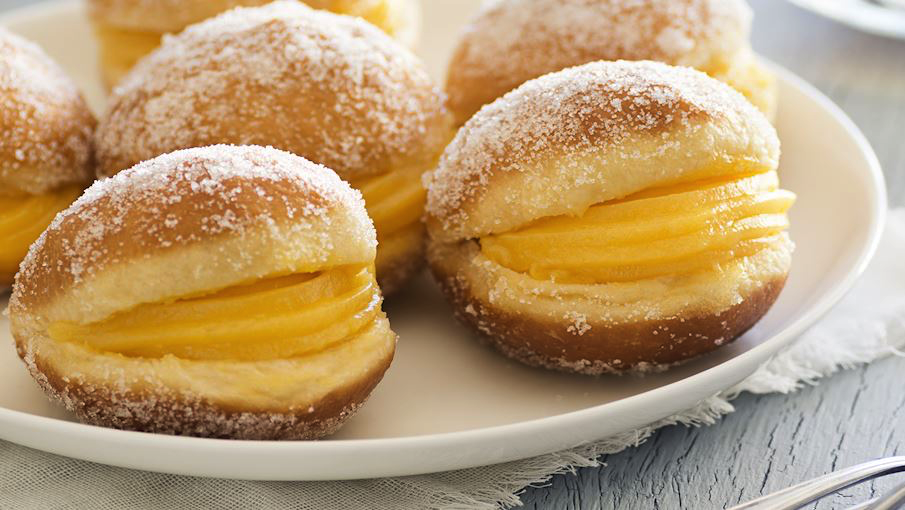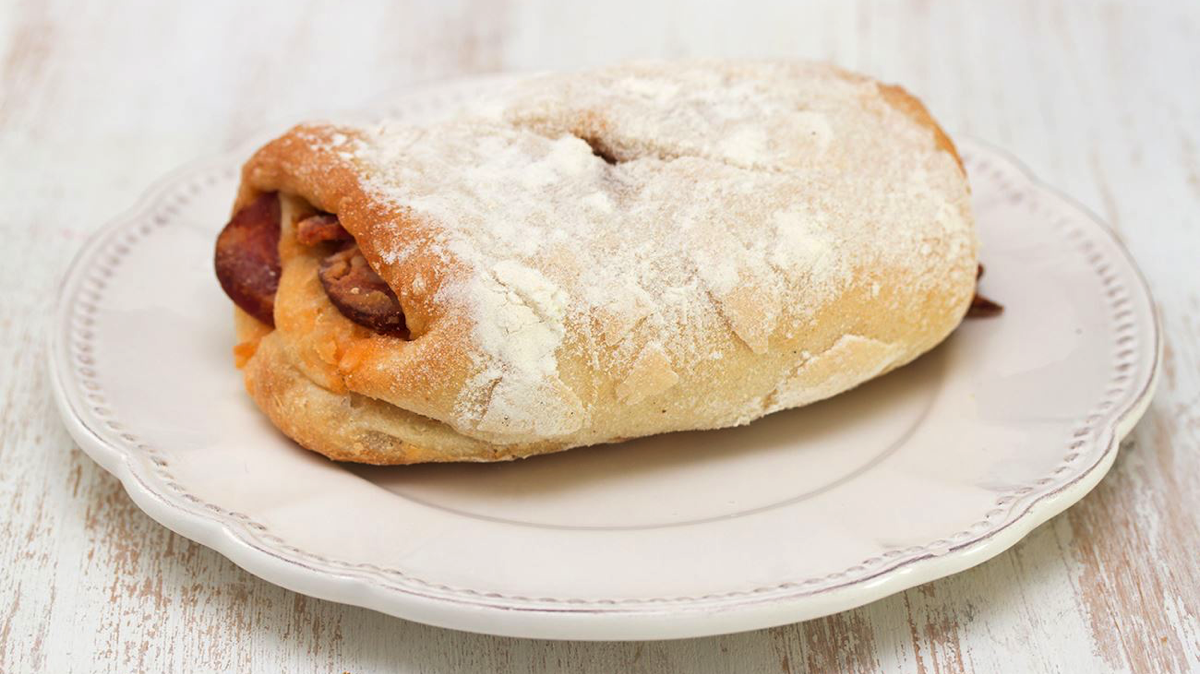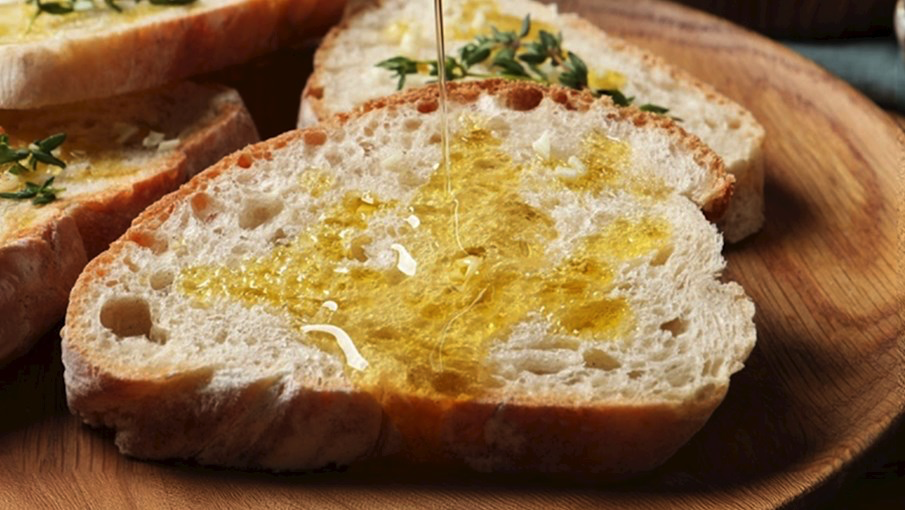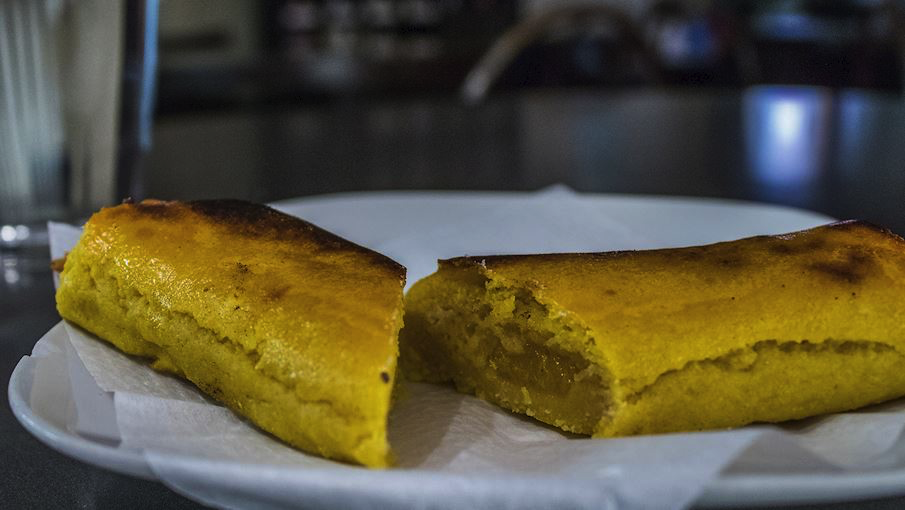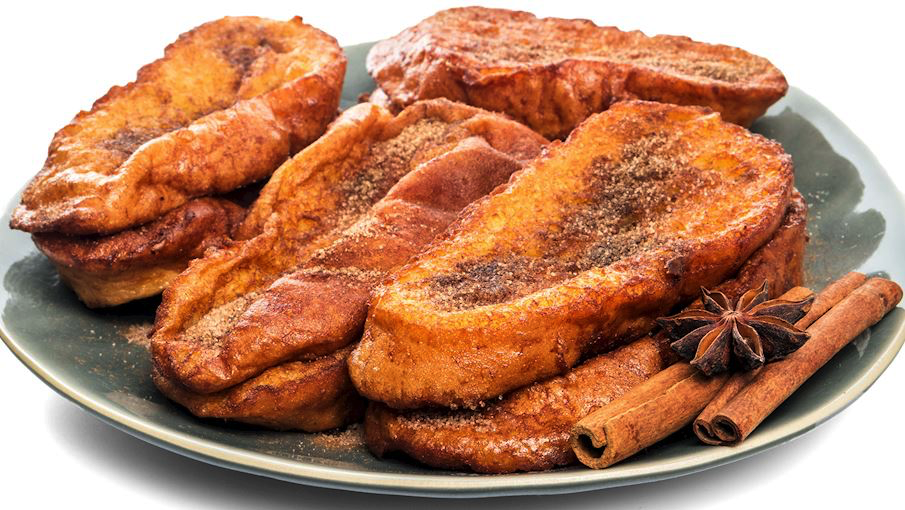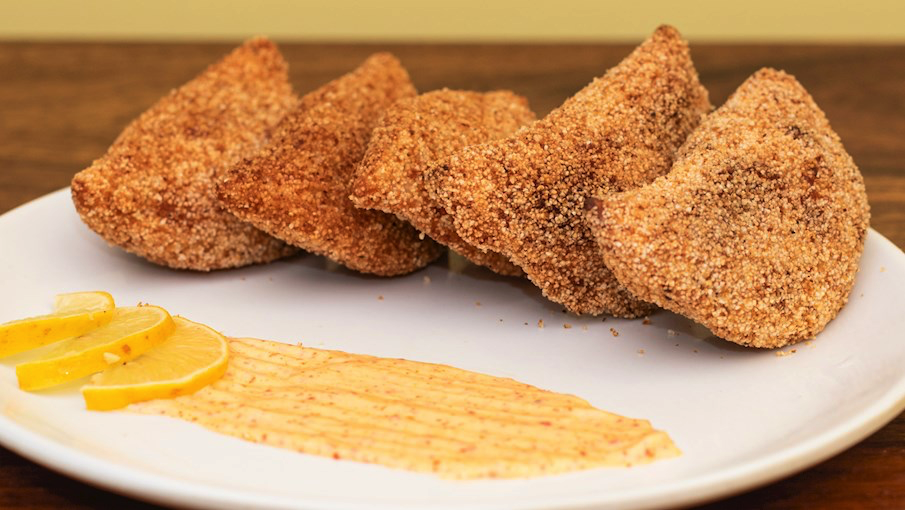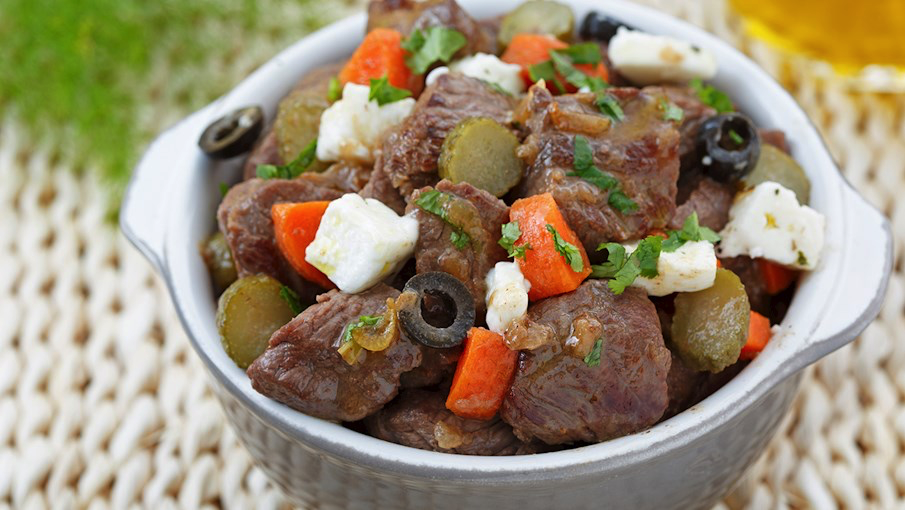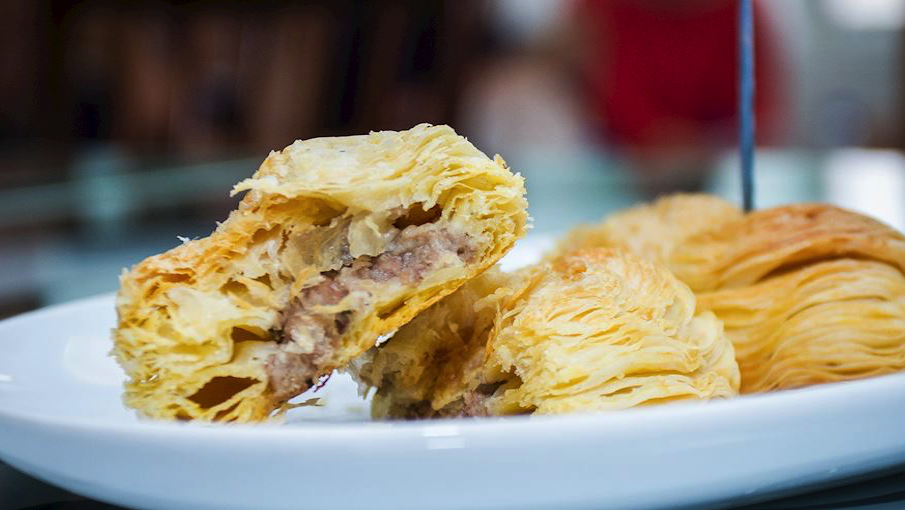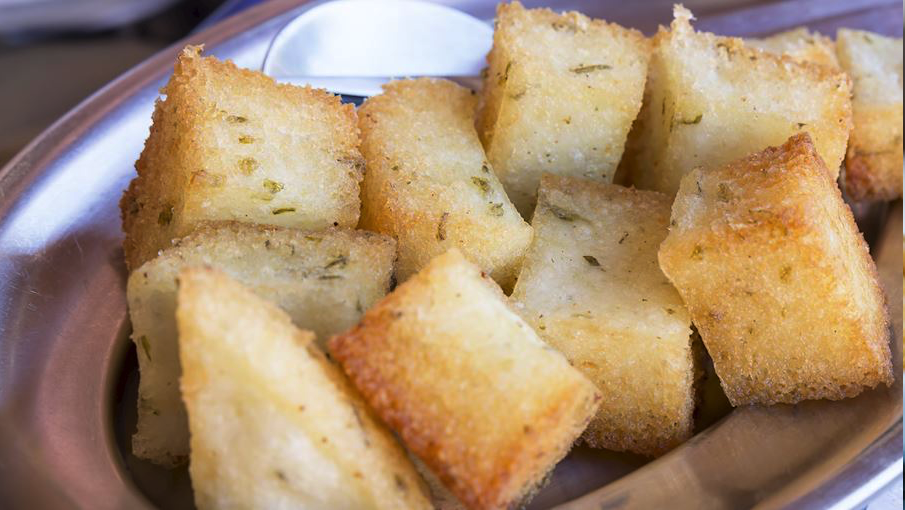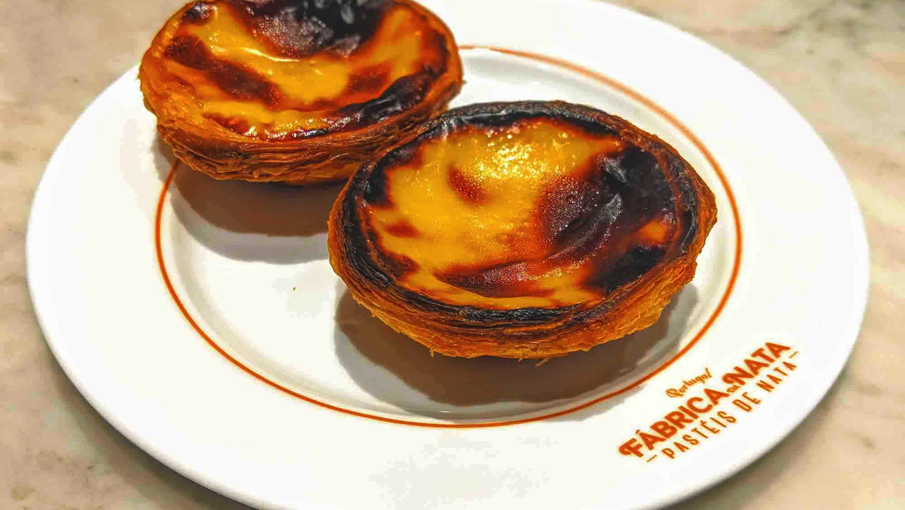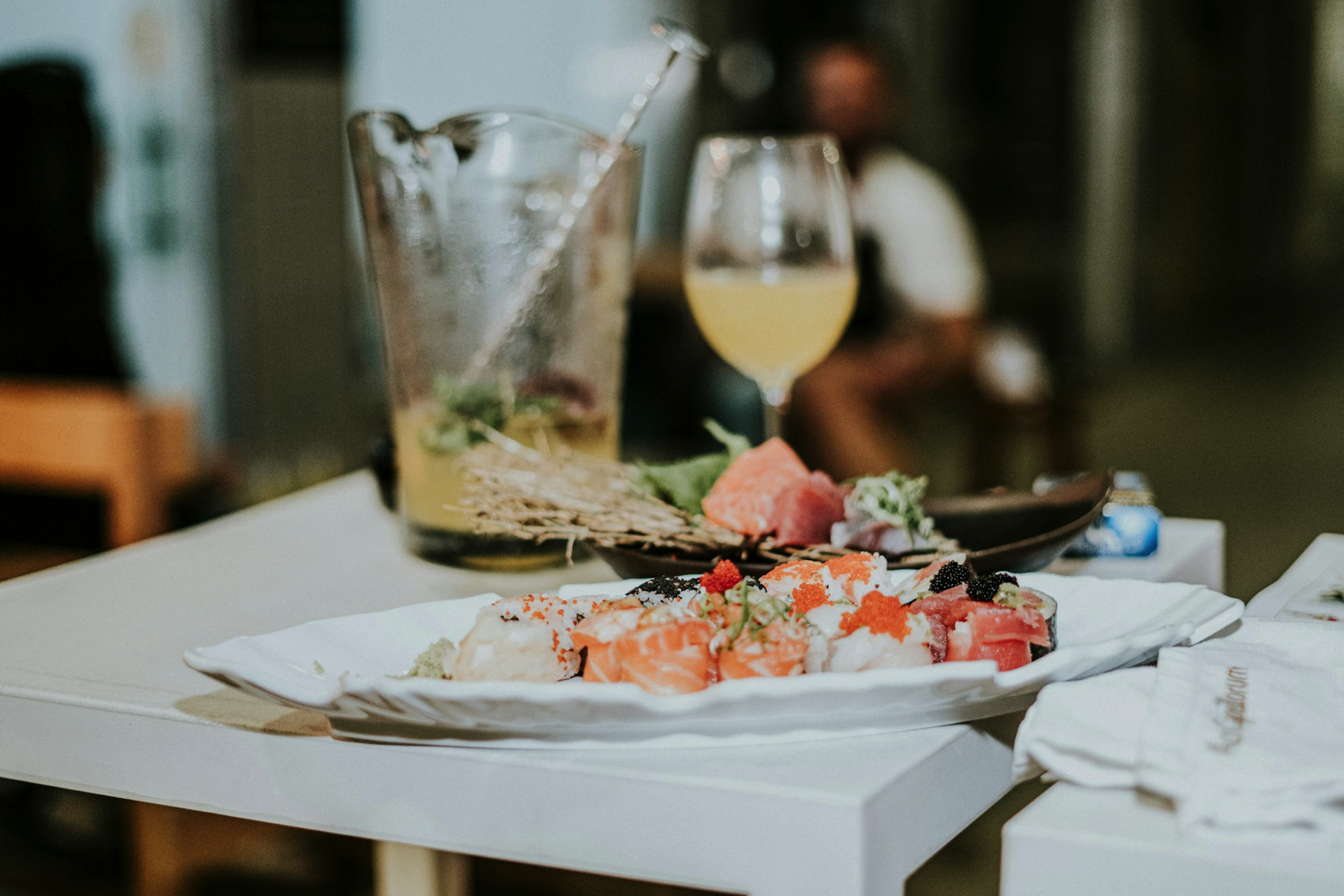Although eating out in Portugal often revolves around sitting down for big meals, there’s also quite a big snacking culture as well.
Bolas de Berlim
Bolas de Berlim are Portuguese donuts that are sliced in half, then filled with sweet and creamy egg-based custard. Fluffy on the exterior and thick and creamy on the interior, these donuts are typically rolled in granulated sugar before being filled with the custard.
Pão com chouriço
Pão com chouriço is a traditional Portuguese snack. It consists of yeasted dough rolls that are filled with the famous pork sausage known as chouriço. The bread rolls are usually made with flour, yeast olive oil, salt, and slices of chouriço sausage.
Once the dough has been prepared, it's typically rolled into rectangles, topped with slices of chouriço, then rolled and closed. These delicious snacks are baked in the oven until golden brown, and it's recommended to serve them while still warm.
Pão com azeite
High-quality, cold-pressed olive oil is ideal. The bread is usually sliced and may be served fresh or lightly toasted, enhancing its texture and providing a warm base for the olive oil. The olive oil is typically poured into a small dish or bowl for dipping, though some variations may include a drizzle of olive oil directly on the bread slices.
Pampilho
High-quality, cold-pressed olive oil is ideal. The bread is usually sliced and may be served fresh or lightly toasted, enhancing its texture and providing a warm base for the olive oil. The olive oil is typically poured into a small dish or bowl for dipping, though some variations may include a drizzle of olive oil directly on the bread slices.
Rabanada
Rabanada is the Portuguese and Brazilian version of french toast. It's made with round or oval stale bread cut in thick slices that's dipped in milk (or milk, sugar, and vanilla) and beaten eggs, fried in oil, then sprinkled with cinnamon sugar.
As a result, rabanada is sweeter and crunchier than the American french toast. The first mention of rabanada dates back to the 15th century, when it was described by Juan del Encina as a dish that's helpful for recovery from childbirth, which is why rabanada is alsko known as fatia parida, meaning slices for the new mum.
Rissóis
Portuguese rissóis are a type of savory pastry similar to empanadas or turnovers. They consist of a dough filled with a variety of fillings, which can include shrimp (rissóis de camarão), minced meat (rissóis de carne), or codfish (rissóis de bacalhau).
The filled dough is then breaded and deep-fried until golden and crispy. Rissóis are a popular snack or appetizer in Portugal, often served at gatherings, parties, and as part of a selection of petiscos (Portuguese tapas).
Pica Pau
Pica pau is a traditional Portuguese dish consisting of small pieces of fried beef in a light gravy made with beer, garlic, oil, chili, and mustard. The dish is usually consumed as a snack, accompanied by a few glasses of cold beer and bread for mopping up the sauce.
When served, pica pau is traditionally topped with olives and pickled carrots and cauliflowers. The name of the dish means woodpecker, because you pick at the beef with a wooden toothpick. Pica pau is a staple of the Portuguese tascas – tiny little restaurants.
Pastel de Chaves
This clam-shaped Portuguese delicacy is made with a puff pastry shell that is filled with a unique mixture of minced veal, bread, and onions. The tradition of preparing pastel de Chaves dates back to 1862, and according to a popular legend, the first person to sell these unique pastries was Teresa Feliz Barreira, the founder of Casa do Antigo Pasteleiro, the first establishment where pastel de Chaves could be bought.
The original recipe stayed in her possession for 75 years, until the 1940s, when other bakeries in Chaves started to manufacture and sell the same product. The Portuguese city of Chaves protected this famous pastry as their authentic product, which licensed them to be the only location where pastel de Chaves can be produced and sold.
Milho Frito
Milho frito is a traditional Portuguese specialty made with cooked cornmeal that is cut into small squares and fried in oil. It originated as a frugal dish in the Portuguese region of Madeira, and was initially prepared plain. Today it is usually enriched with thinly sliced cabbage, garlic, and a variety of fresh herbs.
Milho frito can be enjoyed as a nutritious snack but is traditionally served as a complement to other meat or seafood dishes.
Pastéis de Nata
These days, most people have not only heard of a pastel de nata, but actually tried one. It’s one of Portugal’s most famous cakes and, not only will you find them in just about every pastelaria in Portugal, but you’ll also find them in many bakeries around the the world as well.
From experience, the pastéis de nata I’ve found outside of Portugal are generally nowhere near as good as the ones you’ll find in Portugal. I don’t know if it’s to do with different types of ovens, or just people being unfamiliar with how they should taste, but most non-Portuguese bakeries just cannot make them properly. If you want to experience the authentic thing, you have to come to Portugal and visit a specialist bakery like Pastéis de Belém or Manteigaria in Lisbon.
Drop us a like!
Don’t forget to drop us a like, follow, and turn on your notifications so you don’t miss a thing!
Are you ready to learn Portuguese with Dina?
We've been working on a European Portuguese course for some time. After much research, student feedback, and a few iterations, we think we've got it! We used scientifically proven techniques to help you improve your pronunciation, phrase construction, oral understanding, and grammar.
We want learning new languages to be fun and interesting. Everything is like a story. This course is different from any other. Start learning Portuguese with Dina for free by clicking here.


